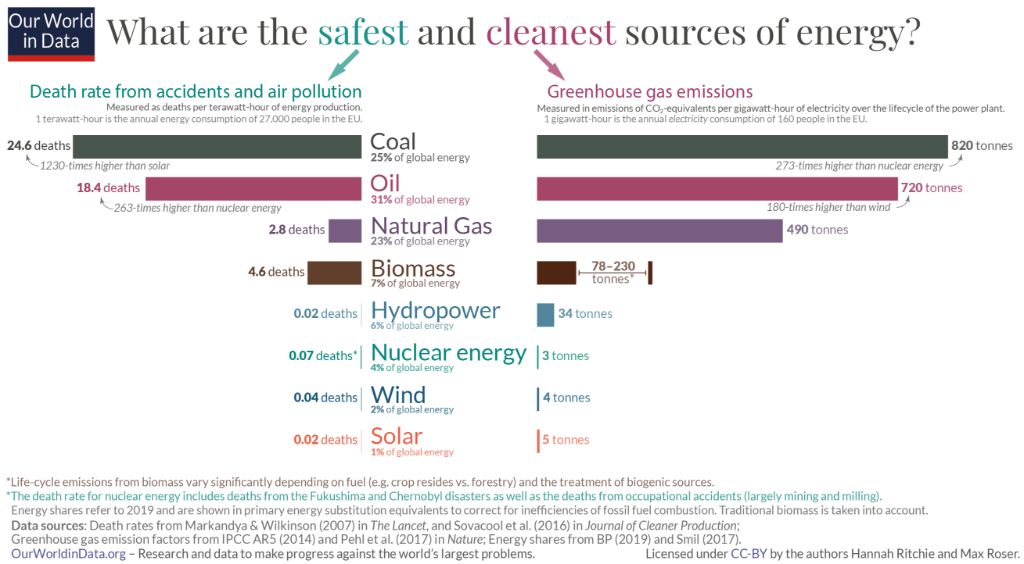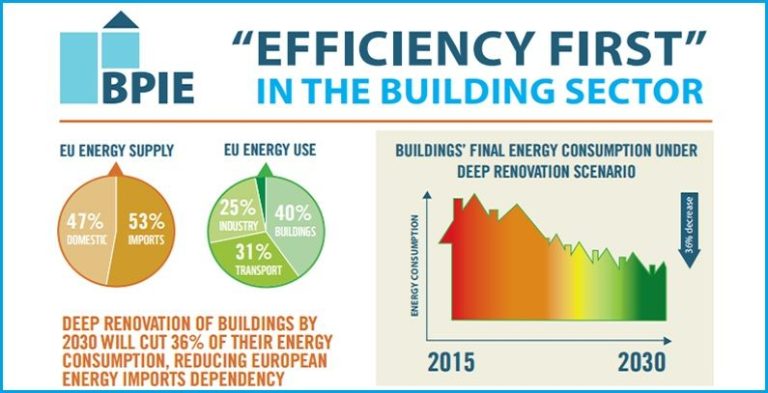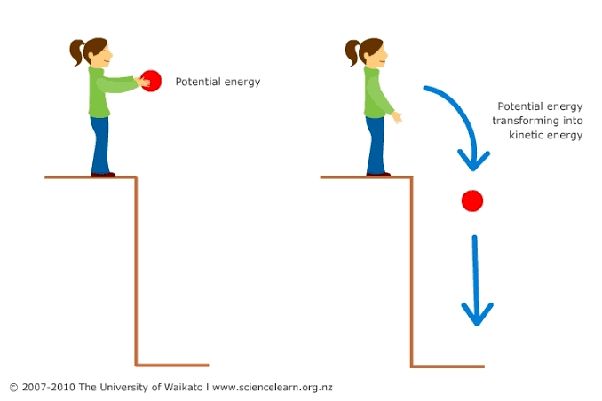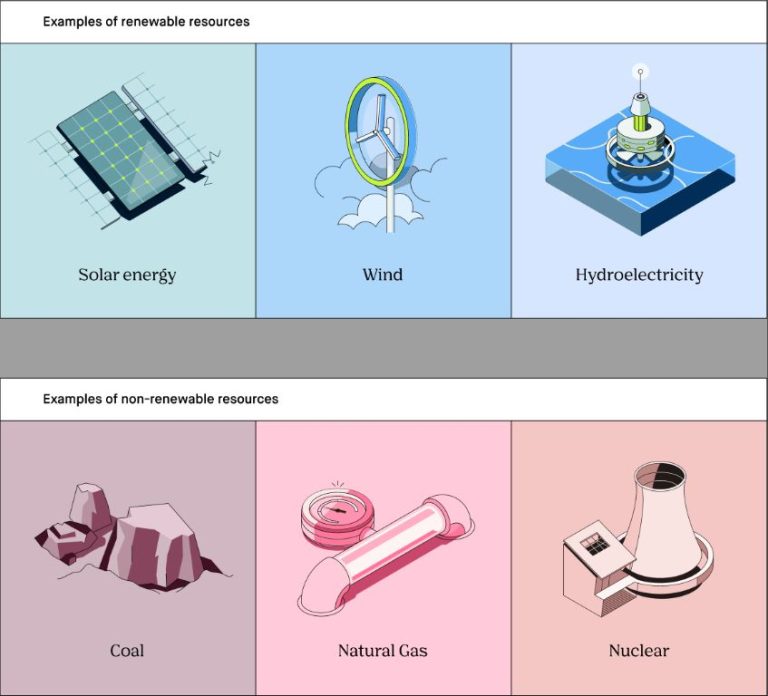What Is The Most Inefficient Type Of Renewable Energy?
Introducing Renewable Energy Efficiency

Renewable energy efficiency refers to the ratio of useful energy output from a renewable energy source compared to the total energy input required to operate that source. Essentially, it is a measure of how much useful energy we can extract from renewable sources like solar, wind, hydro, or geothermal compared to how much energy needs to be invested to build, operate, and maintain the renewable system (https://www.energy.gov/eere/renewable-energy).
Improving renewable energy efficiency is crucial for several reasons. First, higher efficiency means lower operating costs for renewable power. More efficient systems require less land area and materials to build. They can also generate more usable energy from the same input sources like wind or sunlight. This makes renewable power more cost-competitive with conventional fossil fuels (https://www.eesi.org/topics/energy-efficiency/description).
Second, higher efficiency reduces waste and environmental impacts. More efficient renewable systems maximize energy output while minimizing ecological disturbances from facility construction and operation. They help conserve land, water, and other natural resources.
The major types of renewable energy sources with potential for improved efficiency include solar photovoltaics, wind turbines, hydropower facilities, geothermal plants, and bioenergy systems. Advances in materials, design, and integration can boost the productivity of these technologies.
Comparing Efficiency of Wind, Solar, Hydro, Geothermal
When comparing renewable energy sources, efficiency is an important consideration. Efficiency refers to the ratio of electrical energy output versus energy input for a system. The most common metrics used to measure efficiency are capacity factor, energy conversion efficiency, and cost per watt.
Wind turbines have capacity factors between 25-50%, meaning they produce electricity at 25-50% of their maximum capacity, limited by intermittent wind resources. The energy conversion efficiency of wind turbines ranges from 35-45%. While the capital costs per watt are relatively low, the intermittency does impact overall efficiency metrics [1].
Solar photovoltaics have capacity factors around 15-30% due to reliance on sunny weather. Energy conversion efficiency ranges from 15-23% currently. While costs have fallen dramatically in recent years, solar PV systems require inverters to convert DC to AC which impacts overall efficiency [1].
Hydroelectric plants are among the most efficient at converting mechanical energy into electricity, with typical efficiency rates of over 90%. Capacity factors for hydroelectric can reach 85%. However, suitable hydro resources are geographically limited. The initial civil works required also impacts overall costs per watt [2].
Geothermal plants can achieve capacity factors exceeding 90% given constant heat resources. Energy conversion efficiency ranges from 10-20% currently. While geothermal offers weather-independent base load power, the geographic limitations and upfront drilling costs impact the overall efficiency metrics [3].
Wind Energy Efficiency
The efficiency of wind turbines depends on several factors. The theoretical maximum efficiency of a wind turbine is approximately 59%, also known as the Betz limit, according to the University of Michigan Center for Sustainable Systems Wind Energy Factsheet. In reality, modern wind turbines achieve efficiencies of around 45-50%.
The power coefficient, or Cp, is another metric used to assess wind turbine efficiency. Most commercial turbines have a Cp of around 0.4-0.5 according to Pico Technology Measuring Wind Turbine Performance. This means they extract 40-50% of the kinetic energy from the wind.
Capacity factor is another important efficiency metric, measuring actual output over a period of time compared to maximum possible output. Onshore wind turbines have average capacity factors of around 35%, while offshore turbines can reach 40-50% due to steadier wind conditions.
While the efficiency of an individual modern turbine is relatively high, overall wind farm efficiency tends to be lower in real-world operating conditions due to variability in wind speeds, turbine spacing issues, and transmission losses. There is still room for improvement in terms of maximizing wind energy utilization.
Solar Energy Efficiency
Solar energy panels convert sunlight into electricity through the photovoltaic effect. The efficiency of solar panels indicates how much of the sun’s energy striking the panel is converted into usable electricity. According to Our World in Data, most commercial solar panels today have an efficiency of 15-20%. However, researchers believe this number can jump to over 50% with advanced solar cell technology.
The efficiency of a solar panel is determined by the material used in the solar cell. Common materials like crystalline silicon tend to have an efficiency of around 15-20%. More advanced materials like gallium arsenide can reach over 30% efficiency but are more expensive. In lab settings, experimental solar cells using multi-junction cells have exceeded 46% efficiency.
In real-world operating conditions, solar panels rarely achieve their rated lab efficiency. Performance ratio is a better metric, calculated by dividing the actual energy output by the theoretical maximum output. According to EE Power, performance ratios for solar systems typically fall between 0.75 to 0.90. This accounts for losses from temperature, soiling, wiring, and other external factors.
The capacity factor of solar power measures the average energy produced divided by the maximum possible production. Solar capacity factors range from 15-30% depending on the location. Low capacity factors highlight solar’s intermittent generation profile but can be mitigated via battery storage and connecting distributed solar resources.
Hydroelectric Efficiency
Hydroelectric power plants convert the energy of flowing or falling water into electricity. The efficiency of this process depends on several factors related to the turbines, dams, and pumped storage systems used.
The turbine is the component that converts the kinetic energy of moving water into mechanical energy to spin a generator. Turbine efficiency can vary greatly depending on the turbine design, with Kaplan turbines being the most efficient at converting kinetic energy, operating at over 95% efficiency under optimal conditions [1].
The overall efficiency of a hydroelectric dam is also affected by how much water is lost through spillways or leaks in the dam structure. Well-maintained dams can achieve efficiencies of 80-90%, while aging dams with greater water losses may only have 50-60% efficiency [2].
Pumped storage hydroelectric plants can achieve high efficiencies of 70-80% by using cheap off-peak electricity to pump water uphill to a reservoir, then releasing it to generate electricity during high demand periods [3]. However, there are energy losses in the pumping process.
While hydroelectric power has great potential, the efficiency of existing facilities varies greatly depending on factors like turbine condition, dam maintenance and pumped storage operations. Careful design, maintenance and upgrading can improve hydroelectric efficiency.
[1] https://finmodelslab.com/blogs/kpi-metrics/hydroelectric-power-kpi-metrics
[2] https://www.energy.gov/eere/water/hydropower-market-reports
[3] https://finmodelslab.com/blogs/kpi-metrics/hydroelectric-power-generation-kpi-metrics
Geothermal Energy Efficiency
As a baseload power source, geothermal power plants are designed and built for maximum efficiency. According to real-world data analyzed by Moon (2012), the average conversion efficiency of geothermal power plants worldwide is about 10-20%[1]. This means for every 100 units of geothermal heat energy available, 10-20 units are converted into electricity by the power plant.
Capacity factors for geothermal power plants are quite high compared to other renewables, typically achieving 90% or greater[2]. This demonstrates their ability to provide consistent, reliable power generation. However, viability of geothermal power depends heavily on geographical location and subsurface resources. Areas with high subsurface heat flow, permeable reservoirs, and available fluid are the best sites for geothermal development.
The Least Efficient Type
After reviewing the efficiency data of the major renewable energy sources, the least efficient type is solar thermal energy. Solar thermal captures heat from the sun to heat water or spaces, but only converts this into useful energy at an efficiency of around 20-40% (1). This is significantly lower than solar photovoltaics which convert sunlight directly into electricity at an average efficiency of 15-20%. Wind turbines can operate between 35-55% efficiency, while geothermal electricity generation can reach 10-23% efficiency. Even hydroelectric dams convert the kinetic energy of flowing water into power at 40-90% efficiency.
So while solar thermal utilizes the free and abundant energy of the sun, the challenges of capturing and converting that heat energy compared to other renewables leaves it as the least efficient renewable energy source.
Why This Type is Less Efficient
There are several key factors that lead to the lower efficiency of
Technically, the efficiency of
Economically,
Geographically, areas with lower wind speeds, solar intensity, or water flow will generate less energy for the same installation size. So the renewable resource availability and quality affects how efficiently the installations can extract energy. Regions with poorer renewable resources will have lower capacity factors and efficiencies [3].
Improving Efficiency
There are several ways we can improve the efficiency of renewable energy, particularly for less efficient sources like solar PV. According to the Inspire Clean Energy blog, research into advanced materials like perovskites shows promise for improving solar cell efficiency beyond traditional silicon cells (https://www.inspirecleanenergy.com/blog/clean-energy-101/energy-efficiency-and-renewable-energy). The International Renewable Energy Agency (IRENA) also points out that policies like renewable energy targets, carbon pricing, and subsidies for R&D can drive innovation and deployment of more efficient technologies.
The Energy Efficiency and Renewable Energy office of the U.S. Department of Energy conducts research across renewable technologies to increase performance and drive down costs. Their SunShot Initiative aims to make solar cost-competitive with conventional energy by improving solar cell efficiency, reducing soft costs like permitting and installation, and funding demonstration projects of new solar technologies (https://www.eesi.org/topics/energy-efficiency/description).
Ultimately, continued innovation, research, supportive policies, and public and private investment will be key to unlocking efficiency improvements across renewable energy sources.
The Future of Renewable Energy Efficiency
According to the International Renewable Energy Agency’s (IRENA) World Energy Transitions Outlook 2022 report, renewable energy is projected to supply over two-thirds of global electricity by 2050 under their 1.5°C scenario. IRENA predicts renewable energy’s share of generation capacity will reach 86% by 2050, with solar and wind accounting for nearly 70% of this capacity. Improvements in technology, manufacturing, scale, and competitiveness are expected to drive continued gains in efficiency across all renewable sources over the next few decades.
The International Energy Agency (IEA) also forecasts significant growth in renewables through 2030 based on current policy settings alone. The IEA projects renewable power capacity to expand by over 2,400 GW from 2022 to 2027, with solar accounting for nearly 60% of this growth. They estimate renewables will make up over 80% of new power capacity added through 2030. Efficiency improvements, particularly for solar PV and wind turbines, are a key factor enabling this continued expansion.
In summary, projections indicate sizable growth in renewable energy globally, with solar and wind leading capacity additions. Through technological innovations, manufacturing improvements, and scaled deployment, the efficiency of renewables is expected to increase substantially in the coming years. While challenges remain, the outlook is optimistic for renewables to supply a majority of electricity by mid-century.





